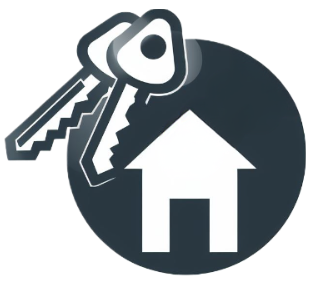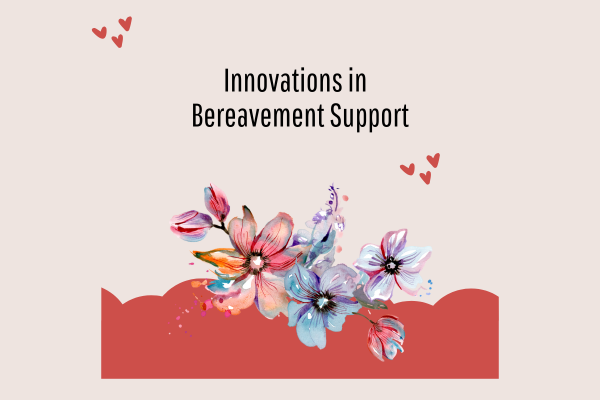
by editor | Jun 28, 2025 | Grief & Loss - Aides, Grief & Loss - Chaplain, Grief & Loss - Nurses, Grief & Loss - Social Workers, Grief and Loss, Patient Care, Resources and Readings
In recent years, hospice bereavement care has undergone significant transformation. Early programs offered traditional service delivery models relying on limited offerings, and structured and uniform service delivery format.
Over time, however, researchers and clinicians have found that that a more individualized approach to bereavement support – customized to the needs of different cultural backgrounds, circumstances of death, and trauma history, for example – could be more effective.
Expanding the Definition of Grief and Loss
Modern hospice bereavement programs have expanded their understanding of grief beyond traditional death-related loss. Today’s programs recognize that grief encompasses losses of health, relationships, roles, independence, and future plans. This broader conceptualization has led to more inclusive and comprehensive support services, acknowledging that families often experience multiple, overlapping losses throughout the illness trajectory and beyond.
Contemporary programs also embrace a fundamental shift in perspective, acknowledging that grief is not a problem to be solved but a natural human experience that requires support rather than treatment. This movement away from pathology-based models toward strength-based approaches honors individual grief styles and timelines. It recognizes that there is no universal “right way” to grieve. Programs now focus on building resilience rather than moving people through predetermined stages.
Community-Centered Approaches
One of the most significant innovations in hospice bereavement care has been the expansion of grief support services. Rather than serving only families of former patients, modern programs often offer services to the broader community. They no longer restrict grief expertise to those who experienced grief through hospice care. This community-centered approach creates increased accessibility by making services available to anyone experiencing loss. It also reflects a practical understanding that larger, more diverse groups can provide richer support experiences for participants. As an additional benefit, it promotes resource efficiency, allowing organizations to serve larger numbers.
These programs also become focal points for community resilience and mutual support and offer early intervention for grief that can prevent more complex bereavement complications from developing. They also serve as educational resources for the broader community, helping to normalize conversations about death and grief while building community capacity for supporting those who are grieving.
Diversification of Service Modalities
Contemporary hospice bereavement programs have moved beyond traditional talk therapy and support groups to embrace diverse modalities. This diversification reflects a growing understanding that grief may transcend words and can be more effectively processed through various forms of expression.
Expressive arts programming has become a cornerstone of innovative bereavement care. Modern hospices offer support through art therapy, music therapy, writing workshops, and drama therapy. Research supports the effectiveness of these creative interventions, with studies showing evidence of the value of individual creative arts in helping people cope with bereavement.
Movement-based programming has also gained recognition as an effective grief intervention. Walking groups, yoga classes, and other physical activities acknowledge the embodied nature of grief. They provide opportunities for healing through movement and connection with others. These programs recognize that grief affects the whole person and that healing often requires attention to physical as well as emotional well-being.
Specialized programming for specific populations and types of loss has become increasingly sophisticated. Pediatric bereavement programs use age-appropriate approaches that incorporate play therapy, art activities, and developmental considerations suited to different age groups. Young adult programs acknowledge the unique challenges faced by this often-overlooked population, while loss-specific groups offer specialized support for suicide, overdose, sudden death, and prolonged illness, recognizing that different circumstances require different approaches.
Technology Integration and Virtual Programming
The integration of technology has revolutionized hospice bereavement care delivery, with changes accelerated significantly by the COVID-19 pandemic. Virtual support groups conducted through online platforms now allow participation regardless of geographic location or physical limitations.
Digital resource libraries offer online access to educational materials, guided meditations, and self-help tools that participants can access at their own pace and on their own schedule. Telehealth counseling provides individual sessions conducted via secure video platforms. Social media support through closed Facebook groups and other platforms creates opportunities for ongoing peer connection between formal programming sessions.
These technological innovations may be particularly valuable for reaching underserved populations, including those in rural areas, individuals with mobility limitations, and those whose work or family responsibilities make attending in-person programming difficult.
Trauma-Informed Care Integration
Modern hospice bereavement programs increasingly incorporate trauma-informed care principles, recognizing that many losses involve traumatic elements that require specialized approaches. This integration reflects growing awareness that different loss experiences may require different approaches to healing. Traditional grief models may not be adequate for supporting individuals who have experienced traumatic loss or who have histories of trauma that complicate their grief experience.
Trauma-informed approaches begin with screening for trauma history to understand how past experiences may impact current grief. They emphasize creating physical and emotional safety in all programming. Participants are empowered to direct their own healing process through choice and collaboration. Cultural responsiveness acknowledges how trauma and healing are understood differently across cultures. Comprehensive staff training ensures that all team members understand trauma impacts and responses.
These approaches recognize that traumatic loss often involves elements of sudden death, violence, suicide, overdose, or other circumstances that can complicate the grief process. Programs incorporating trauma-informed principles provide specialized support that addresses both the grief and the trauma, helping participants develop coping strategies that acknowledge the complexity of their experience.
Partnership and Collaboration Models
Contemporary hospice bereavement programs have moved away from operating in isolation to developing robust community partnerships that enhance their reach and effectiveness. Healthcare system integration has led to partnerships with hospitals and emergency departments, primary care practices, mental health providers, pediatric care centers, and nursing homes. These collaborations create seamless referral networks and ensure that bereavement support is available at critical transition points in the healthcare experience.
Community organization partnerships extend the reach of bereavement programs to schools and universities, faith communities, civic organizations, senior centers, community mental health centers, and first responder agencies. These partnerships recognize that grief support is most effective when it is embedded within existing community networks rather than operating as an isolated service.
Professional network development has become increasingly important as programs participate in multidisciplinary case consultations, professional development initiatives, research collaborations, quality improvement networks, and policy advocacy efforts. These networks facilitate sharing of best practices, collaborative problem-solving, and collective advocacy for improved policies and funding for bereavement care.
Conclusion: A Continual Evolution
The evolution of hospice bereavement care from traditional, clinic-based models to innovative, community-centered approaches represents a significant developments in end-of-life care. This transformation reflects a deeper understanding of grief as a normal human experience that requires community support rather than clinical intervention.
The journey from traditional bereavement care to today’s innovative approaches demonstrates the power of organizational learning, community engagement, and commitment to improving outcomes for some of our most vulnerable community members.
By embracing innovation and forming strategic partnerships these programs continue to evolve to meet the changing needs of grieving individuals and families. The future of hospice bereavement care will likely be characterized by even greater integration with community systems, increased use of technology, and continued expansion of the populations served.
Where Can You Find Out More
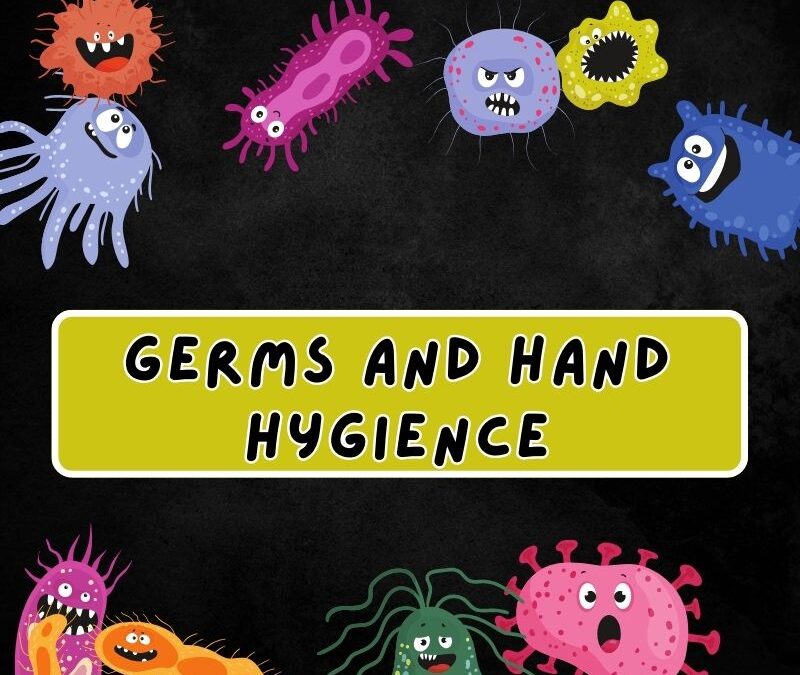
by editor | Feb 9, 2025 | Care Keys - Aides, Care Keys - Chaplains, Care Keys - Nurses, Care Keys - Social Workers, Teaching Tools
Clean hands are one of the most important ways you protect your patients, yourself, and your community. Let’s learn why hand hygiene is so vital and how to do it right.
A Quick Look Back:
Did you know that doctors didn’t always understand the importance of handwashing? Back in the 1800s, a doctor noticed many women were dying after childbirth. He realized that medical students, after working with deceased individuals, were going straight to deliver babies without washing their hands. The doctor figured out that something from the deceased individuals was making the new mothers sick. When he made the students wash their hands, the number of sick mothers dropped dramatically! This was a huge discovery.
Today, we know much more about germs and how they spread. We know that handwashing is a powerful tool to prevent infections.
What is Hand Hygiene?
Hand hygiene means cleaning your hands. You can do this in two ways:
- Washing with soap and water: This physically removes germs from your hands.
- Using hand sanitizer: This kills germs on your hands. For hand sanitizer to work, it needs to have at least 60% alcohol.
Germs: They’re Everywhere!
Germs are tiny living things that can make people sick. They’re on everything we touch – doorknobs, phones, food, and, of course, our hands. When you touch something with germs on it, the germs get on your hands. Then, when you touch something else, you can spread those germs. This happens everywhere, not just in healthcare settings, but also at home, in stores, and in the community.
Why is Hand Hygiene So Important?
Hand hygiene is essential because it stops the spread of germs. By cleaning your hands, you protect:
- Your patients: Especially those who are already sick or weak.
- Yourself: You can get sick from the germs you pick up.
- The environment: You prevent germs from spreading to other people and places.
Hand Hygiene in Hospice Care:
In hospice care, hand hygiene is extra important. Many patients have weakened immune systems, making them more vulnerable to infection. As a hospice home health aide, you move between different homes and patients, so you must be extra careful not to spread germs. Think about all the surfaces you touch and the different people you interact with. Clean hands are your first line of defense.
When Should You Clean Your Hands?
Clean your hands often! Here are some key times:
- Before and after touching a patient.
- Any time you touch blood, body fluids (like saliva or mucus), or anything that might be contaminated.
- After taking off gloves.
- After using the restroom.
- Before preparing food.
- Any time your hands look or feel dirty.
Handwashing vs. Hand Sanitizer:
Hand sanitizer is quick and easy. It’s great for times when you can’t get to a sink right away. However, handwashing with soap and water is the best way to clean your hands, especially when they are visibly dirty.
When to Wash (Soap and Water):
- When your hands are visibly dirty.
- After using the restroom.
- When caring for patients on special contact precautions (your supervisor will tell you when this is needed).
How to Wash Your Hands
- Wet your hands with clean, running water.
- Lather your hands with soap.
- Scrub all surfaces of your hands – palms, backs, between fingers, under nails – for at least 20 seconds (sing “Happy Birthday” twice!).
- Rinse your hands well under running water.
- Dry your hands with a clean towel or air dryer.
How to Use Hand Sanitizer
- Apply enough sanitizer to cover all surfaces of your hands.
- Rub your hands together until they are dry (about 15-20 seconds).
Remember: Clean hands save lives. By following these hand hygiene guidelines, you’re making a real difference in the health and well-being of your patients, yourself, and your community.
Where Can You Find Out More?
- See this video about hand hygiene
- CDC: About Hand Hygiene for Patients in Healthcare Settings
- CDC Clinical Safety: Hand Hygiene for Healthcare Workers
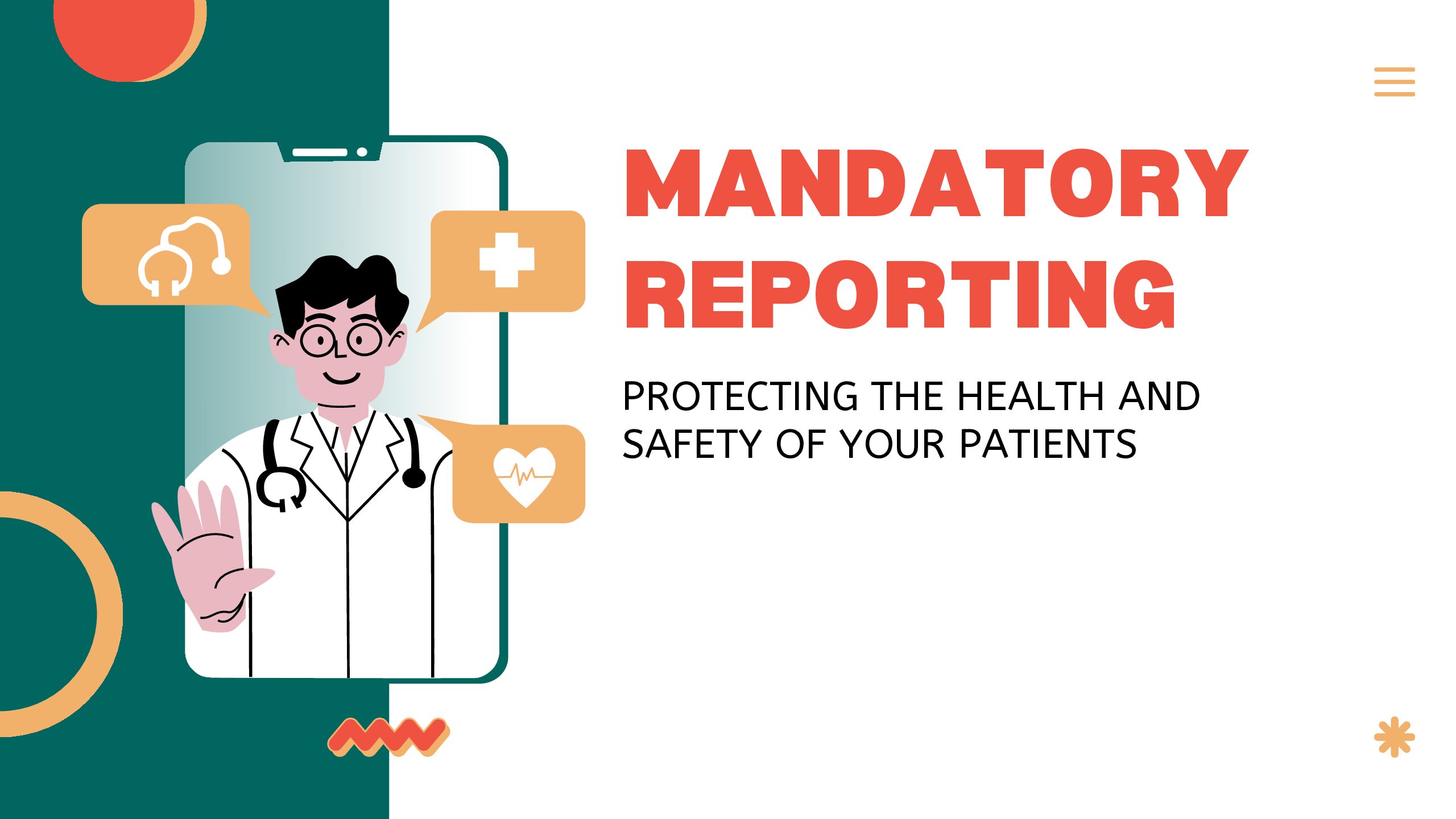
by editor | Jan 23, 2025 | Care Keys - Aides, Care Keys - Chaplains, Care Keys - Nurses, Care Keys - Social Workers, Career Advancement, Clinical Compliance, Patient Care, Rules and Regulations - Chaplains
What is mandatory reporting?
Hospice clinicians advocate for their patients and their patients’ families. As a clinician, one of the most important ways that you can advocate for their patient is by engaging in mandatory reporting when you observe or suspect that your patient is being neglected or abused.
What is a mandatory reporter?
A mandatory reporter has an individual duty to report known or suspected abuse or neglect relating to children, dependent adults, or elders. These include:
- A child is anyone who is under 18 years old
- A dependent adult is anyone between 18 and 64 years of age who has physical or mental limitations that restrict their abilities to carry out normal activities or protection of their rights
- An elder is anyone 65 years of age or older
A reporter should report good faith beliefs or reasonable suspicions of abuse or neglect. The report will be confidential, and the identity of the reporter will be hidden from the public.
Who are mandated reporters?
State-specific laws specify several professions of mandatory reporters. These include professions such as:
- Social workers
- Teachers
- Healthcare workers
- Law enforcement
- Childcare providers
- Medical professionals
- Clergy
- Mental health professionals
The list of professions of mandatory reporters varies by state.
What is abuse?
Although we often think of abuse as physical abuse, remember that abuse can come in all different forms. For example, forms of abuse include:
- Physical abuse
- Mental anguish
- Financial abuse
- Sexual abuse
- Emotional abuse
Protect your patients by looking out for all of these different forms of abuse. No one deserves to be subject to any form of abuse.
How can you best protect your patient?
To best protect your patients, constantly be aware and on the lookout for any types of abuse or neglect. Hospice patients are vulnerable since they are often physically frail, dependent on others around them for support and care, and unable to advocate for themselves. As a healthcare worker, you need to advocate for your patient in the case of suspected neglect or abuse.
Continually assess the patient for any signs of abuse or neglect. Look out for any unusual behaviors. Follow any of your agency’s protocols in documenting any observations and conversations. If you identify concerns, share these concerns with the appropriate individual in your agency.
How do you report?
If your agency cannot provide you with clear guidance about how to report the suspected abuse or negligence, each state has websites that can provide you with that guidance. Each state has specific requirements on what you must report, required timing of reporting, and the like.
In addition, most states have reporting hotlines. Remember to be detailed and accurate when you file the report and to provide all the required information.
Why is it important for you to report?
Sometimes, you “may not want to bother” to report suspected abuse or you may feel “it is not your business to get involved”. However, here are two key considerations:
- As a healthcare worker and medical professional, you are a mandated reporter and as such, by law, you have a duty to report known or suspected abuse or neglect
- As a patient advocate and healthcare professional, you have an ethical duty to report instances of known or suspected abuse or neglect
Identifying abuse or neglect as early as possible is critical for the physical and mental health of the abused or neglected individual. Your actions can have profound positive consequences on your patient’s life. Remember: if you see something say something!
Where can you find out more?

by editor | Dec 7, 2024 | Hospice 101 - Aides, Hospice 101 - Chaplain, Hospice 101 - Nurses, Hospice 101 - Social Workers
The world of hospice care is deeply personal and profoundly compassionate. As a hospice clinician, your primary focus is providing compassionate care to your patients and their families during their most vulnerable moments. But the intimate nature of home-based care can sometimes expose you to unexpected risks of workplace violence.
The Growing Concern of Workplace Violence
In recent years, workplace violence has emerged as a critical issue in healthcare, particularly for homecare professionals. A survey conducted by Transcend Strategy Group (https://transcend-strategy.com/insights-workforce-safety/) revealed that over 50% of healthcare workers have witnessed or experienced a violent event.
Workplace violence extends far beyond physical assault. It encompasses a broad spectrum of threatening behaviors including verbal abuse, psychological harassment, and intimidation. These experiences can have devastating consequences — not just physically — but emotionally and professionally.
There are some steps that you can take to help reduce your risk of experiencing workplace violence including pre-visit preparation, situational awareness, and setting boundaries. Let’s explore these further.
Pre-Visit Preparation is Key
Effective safety starts with thorough preparation. Before entering a home, confirm who will be present during your visit. Don’t hesitate to ask about potential safety concerns, ask to have pets restrained, and ensure no weapons are visible. Clear communication with patients and their families can prevent many potential incidents.
Proactive Safety Strategies: Situational Awareness
On visiting a patient’s home, situational awareness is a key preventative action. Situational awareness begins before you even step into a patient’s home. As you approach, take a moment to observe your surroundings. Notice changes in the in the environment – are things different from the previous times you visited the patient’s home? Are there more or fewer cars? Did something change in appearance? This isn’t about paranoia – it’s about being prepared and alert.
When you enter the patient’s home and say hello to the patient and family members, ask the patient or caregiver to introduce you to anyone else in the room if there are new people there. As you look around the room, note potential exit routes in case you need to quickly exit.
Setting Boundaries and Maintaining Professionalism
Your personal safety is paramount. While providing compassionate care is your mission, it should never come at the expense of your well-being. If a situation feels uncomfortable or threatening, you have the absolute right to remove yourself. Engage with management immediately if you feel that your safety is compromised.
Reporting and Documentation: A Critical Process
If you experience workplace violence, it is important that you report the event and that the event is documented. Unfortunately, clinicians are often hesitant to report the experience, citing reasons such as:
- Workplace violence is “part of the job” (acceptance)
- It wasn’t really a big deal… (acceptance)
- Nothing can be done about it anyway (acceptance)
- What will management think if I say something (fear of job loss)
- I want to avoid conflict with the patient/patient’s family (fear of job loss)
- I don’t want to be labeled as incompetent (fear of job loss)
- I was in the wrong place at the wrong time” (blame)
Although you may hesitate to report an incident, it is important that every incident of workplace violence is documented.
Documenting incidents is not just a procedural requirement – it’s a crucial step in preventing future occurrences and in protecting fellow clinical staff. Detailed, confidential reports help agencies identify patterns, implement preventive measures, and create safer working environments. It is important that fellow staff members are aware of potentially problematic situations that may arise when they visit the patient.
Contact Information / Buddy System
Make sure that you have provided your management with emergency contact information for so that someone can be contacted in the case of an emergency. Avoid after dark visits. If after dark visits cannot be avoided, use the “buddy system.” Make sure that someone knows where you are going and is anticipating your return or is anticipating contact from you and will either go out to look for you or call 911 if they do not hear from you.
Wrapping it Up
In summary, workplace violence is a real concern for home healthcare workers but here are steps that you can take to protect yourself:
- Conduct a home assessment to identify potential risks in the home. Be sure to act on those potential risks.
- Establish boundaries: Set your personal safety boundaries. Your personal safety is most important.
- Emergency contact: Ensure your management knows whom you would like to have contacted in case of emergency
- Avoid after dark visits: Try not to visit patient homes after dark.
- Buddy system: Make sure someone knows where you are going, knows when to expect to hear from you, and will go look for you or will call 911 if they do not hear from you by the predesignated time.
- Early termination of visit: If you feel that a situation has escalated or that you are feeling threatened, terminate the visit and engage with management to notify them of the situation.
Want to Learn More?

by editor | Oct 13, 2024 | Compliance and Regulatory - Directors, Hospice 101 - Aides, Hospice 101 - Chaplain, Hospice 101 - Nurses, Hospice 101 - Office Team, Hospice 101 - Social Workers, Interdisciplinary Team, Regulatory Compliance, Rules and Regulations - Chaplains, Rules and Regulations - Nurses, Rules and Regulations - Social Workers
The hospice interdisciplinary group (IDG) creates a patient’s plan of care and provides holistic care to the patient, caregiver, and family. Hospice Conditions of Participation require the IDG to “review, revise, and document the individualized plan as frequent as the patient’s condition requires, but no less frequently than every 15 calendar days.”
As such, the IDG meet at a minimum every 15 days. In many hospice organizations, the interdisciplinary group meets weekly to review patient status and to determine if changes are required to a patient’s plan of care. It is important that during the IDG meeting patients’ care plans are reviewed and updated based upon patients’ assessments. Timely and accurate documentation is critical; this documentation may be reviewed by surveyors and by CMS to ensure compliance with regulations.
Who is required to attend an IDG Meeting
Required members of the IDG meeting include:
- A doctor who is an employee or under contract with the hospice agency
- Registered nurse
- Social worker
- Pastoral or other counselor
These four individuals are minimum participants in the IDG meeting. If one of these members i missing from the IDG meeting, the meeting does not meet Medicare regulations and it is considered as if the meeting did not take place. . Care must be taken to ensure that the minimum requirement – IDG meeting with the participation of at least these four individuals at a minimum of once every 15 days – is met.
Additionally, a staff member is typically identified to serve as the scribe for the IDG meeting. The scribe captures any changes to a patient’s plan of care that are agreed upon during the meeting.
What activities occur during the IDG meeting?
When the meeting begins, all participants sign the meeting sign-in sheet. These sheets serve as documented proof that the hospice has met the Medicare Conditions of Participation – that the required members of IDG participated in the meeting. Sign in sheets are stored in a place that is accessible for review upon the request of auditors or surveyors.
Prior to the IDG meeting, a list is drawn up of the patients who will be reviewed during the meeting. For each of these patient’s members of the care team provide an update on the patient’s current condition, highlighting any concerns. The team then discusses the plan for the upcoming two weeks.
Patients may be ordered for discussion as follows:
- Deaths
- Admissions
- Recertifications
- Evaluation
Let’s review each of these in detail.
Deaths
Each death since the prior IDG meeting is reviewed. The team discusses whether bereavement has been requested or declined. In the case where bereavement has been requested, the individuals who will be receiving bereavement services are identified. Any further details or concerns on the services that will be provided are discussed.
Admissions
The RN Case manager discusses any new admissions since the prior IDG meeting, including patient diagnosis and hospice eligibility criteria. Visit frequency is discussed, hospice aide services, and patient psychosocial needs. Typically, all team members partake in this discussion including a discussion about patient medications and prognostic indicators.
Recertifications
At this stage in the IDG the team discusses all patients who are the end of their benefit period and need to be recertified. Any face-to-face visits that were conducted will be discussed and any that are still pending will need to be scheduled. For patients who were evaluated and are found not to meet criteria, the team discusses how to notify the family and details on how to transition the patient off of hospice care.
Evaluations
All remaining patients on the list are reviewed by the members of the IDG. The team discusses whether any changes to the plan of care are needed, whether any medications need to be changed or if any additional support is required (e.g., chaplain, volunteer). The plan of care may be updated if the team agrees that a change in visit frequency is required.
Updating patients’ plan of care
While each patient is discussed, any changes to the patient’s plan of care are entered into the patient’s chart, which is signed by the medical director.
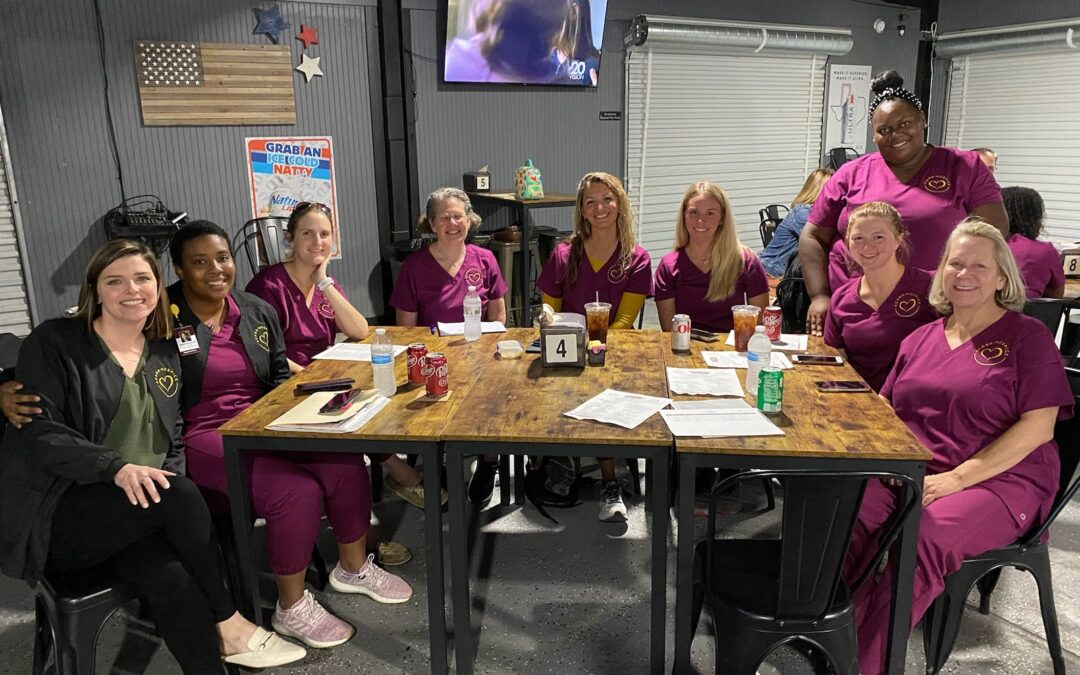
by editor | Oct 7, 2024 | Compliance and Regulatory - Directors, Hospice 101 - Aides, Hospice 101 - Chaplain, Hospice 101 - Nurses, Hospice 101 - Office Team, Hospice 101 - Social Workers, Interdisciplinary Team
Hospice care is patient- and family-centered, where the patient’s and family’s preferences and needs drive the care plan.
The hospice interdisciplinary group (also referred to as Hospice IDG or IDG), also referred to as the interdisciplinary team (IDT) is a team of healthcare professionals who work together to create a plan tailored to the needs of hospice patients. The IDG is crucial because it reflects the fundamental principle of hospice care: a multidisciplinary and holistic approach to treating a patient. Hospice care is not just about managing medical symptoms; it involves addressing the physical, emotional, social, and spiritual needs of the patient and their family. This comprehensive care model requires combined expertise of different healthcare professionals working together as a cohesive team.
Multidisciplinary and 360-degree approach
The idea of a multidisciplinary approach is central to hospice care because a single healthcare professional cannot fully address the complex needs of a patient at the end of life. Hospice patients often experience pain, emotional distress, social isolation, and spiritual concerns, all of which need to be treated so that the patient has a peaceful and dignified end of life experience. Each of the members of the IDG can address different aspects of hospice patient needs.
Physical needs: Managed by the physician and nurse. The physician provides medical direction and oversees patient care while the nurse manages the patient’s medical needs such as pain control and symptom management.
Emotional and social needs: The social worker provides emotional and social support, caring for emotional health, caregiver stress, and family dynamics. Consideration is also given to connecting the family with community resources
Spiritual needs: These are managed by the chaplain, who offers spiritual care and counseling, based on the patient’s and family’s beliefs. The chaplain helps patients and families explore spiritual concerns, questions of meaning, or religious beliefs in the context of their journey.
Daily living needs: Hospice aides assist with personal care like bathing, dressing, and grooming. They ensure dignity and comfort in activities of daily living like bathing, dressing, and grooming.
Companionship and support: The hospice volunteer offers companionship and practical help, like errands or respite for family caregivers.
By involving individuals from different disciplines, hospice care can take a 360-degress approach to a patient’s needs. It means that every aspect of care – physical, emotional, social, and spiritual – is addressed by someone with the expertise to manage that particular dimension. This all encompassing approach is what makes hospice care unique and effective.
Are all member of the IDG required per CMS regulations?
Per CMS regulations, only core members must always be part of the IDG to ensure that hospice care addresses every critical aspect of the patient’s experience. Four disciplines are considered core required members of the team. These include:
- Physician
- Registered nurse
- Social worker
- Chaplain
Some professional members may be included in the IDG as needed, depending upon patient’s individual circumstances. These include:
- Hospice Aide
- Volunteer
- Therapists
- Bereavement Counselor
How is the IDG aligned with regulatory standards?
CMS requires that hospice care involve an interdisciplinary approach because it reflects the need to treat the “whole” patient, not just their medical condition. The IDG ensures that the care plan is tailored to the patient’s evolving needs and that it incorporates feedback from multiple disciplines to achieve the best outcomes. The interdisciplinary model is also a regulatory requirement under the hospice Conditions of Participation (CoPs). As such, surveyors will review the functioning of the IDG during inspections to ensure compliance. A well coordinated interdisciplinary team ensures regulatory compliance and quality patient care.
Why is the interdisciplinary hospice team essential?
Hospice care is patient and family centered, meaning that the patient’s and family’s preferences and needs drive the care plan. The IDG works collaboratively to ensure that the care plan remains flexible and responsive to changes in the patient’s condition. As hospice patients often experience rapid changes in health, having professionals from different disciplines ensures that all aspects of care can be addressed promptly and effectively.
In summary, the IDG reflects hospice’s holistic, multidisciplinary approach to care by ensuring that all dimensions of the patient’s well-being are addressed. Required team members focus on medical, emotional, and spiritual care, while optional members can be added to meet unique or additional needs. This alignment ensures that hospice remains flexible and patient-centered.

